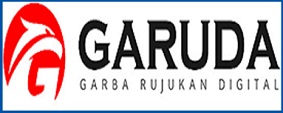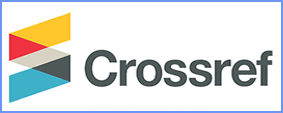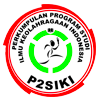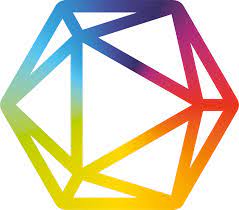The Effect Of Arm Power, Eye Coordination Through Waist Muscle Flexibility On The Ability To Swim In 50 M Breaststroke For Junior Swimming Athletes
Abstract
The problem in this study is that the breaststroke swimming ability of junior athletes in the city of Bukittinggi still looks stiff and underpowered. The purpose of this study was to determine the effect of arm muscle power, ankle coordination through flexibility on the breaststroke swimming ability of junior athletes in the city of Bukittinggi. This type of research is quantitative, namely casual comparative using path analysis techniques. This research was conducted from January to February 2021 in the swimming pool in the city of Bukittinggi. The population in this study were all junior swimming athletes in the city of Bukittinggi, totaling 32 people. The sampling technique used total sampling technique, so the number of samples in this study were 32 athletes. The instruments in this study were: 1) Arm muscle endurance test by carrying out the Pull-Up test, 2) Eye Coordination Using the Mitcel Soccer Test, Hip Muscle Flexibility Using the Sit and Reach Test, 4) The Ability to Swim in the Breaststroke 50 M. Technique data analysis using statistical path analysis or path analysis. The results of this study are: 1) Arm muscle power has a direct and significant effect on the 50 M breaststroke swimming ability of 12.96%. 2) Coordination of the ankles has a direct and significant effect on the 50 M Breaststroke swimming ability of 12.18%. 3) Waist muscle flexibility has a direct and significant effect on the 50 M Breaststroke Swimming Ability by 8.82%. 4) Arm Muscle Power has an indirect effect on the Ability to Swim 50 M Breaststroke through Waist Muscle Flexibility by 20.61%. 5) Coordination of the ankles has an indirect effect on the ability to swim 50 m breaststroke through waist muscle flexibility by 15.13%. 6) Arm muscle power, ankle coordination and waist muscle flexibility have a simultaneous effect on the 50 M breaststroke swimming ability by 80.80%.
Downloads
References
Anton Komaini, dkk. (2019). Pengaruh Metode Latihan Interval Intensif Terhadap Kecepatan Renang Gaya Dada Perenang Pemula Tirta Kaluang Padang. Jurnal Stamina Volume 2 Nomor 1 Maret 2019, E-ISSN 2655-2515
Apri Agus. 2012. Olahraga Kebugaran Jasmani Sebagai Suatu Pengantar. Padang: Sukabina Press.
Apri Agus. 2013. Manajemen Kebugaran Teori dan Praktek. Padang: Sukabina Press.
Arikunto, S. 2010. Prosedur Penelitian Suatu Pendekatan Praktis. Yogyakarta: Rineka Cipta.
Asep Sujana Wahyuri, dkk. (2020). Kontribusi Kecepatan dan Daya Ledak Terhadap Hasil Lompat Jauh Pada Siswa SMP Negeri 2 Lengayang. Jurnal Sain Olahraga dan Pendidikan Jasmani, Volume 20 Nomor 1 Tahun 2020.
Bafirman. 2013. Fisiologi Olahraga. Wineka Media
Bangkit Wahyudi. 2013. Hubungan Power Tungkai Dengan Kemampuan Renang Gaya Dada Siswa Kelas V Sd Negeri I Metenggeng Kecamatan Bojongsari Kabupaten Purbalingga, Prosiding Universitas Negeri Yogyakarta.
Dewayani. (2010). Belajar renang. Semarang: CV. Aneka Ilmu.
Dumadi dan Kasiyo DW. 1992. Renang. Semarang. IKIP Semarang.
Eska Biniasty. (2019). Hubungan Kekuatan Otot Tungkai, Panjang Tungkai, Dan Daya Ledak Otot Tungkai Dengan Kecepatan Renang Gaya Dada (Breaststroke) 25 Meter Pada Mahasiswa Putra Pklo Angkatan 2004/2006. Unnes.ac.id
Hendri Neldi dan Atika Sari Devi. (2019). Hubungan Daya Ledak Otot Tungkai dan Kelentukan Pergelangan Tangan dengan Kemampuan Lay Up Shoot Bola Basket. Jurnal pendidikan dan Olahraga Volume 2 No. 2 Februari 2019 Hal 49-54
Ikhvanus Shava, dkk. (2017). Latihan Plyometrics dan Panjang Tungkai terhadap Kecepatan Renang Gaya Dada Atlet Renang Sumatera Selatan. Journal of Physical Education and Sports, JPES 6 (3) (2017): 266 271 ISSN 2252-648X
Kasiyo Dwijowinoto. 1980. Renang Perkembangan Pengajaran Teknik dan taktik. Semarang: IKIP Semarang.
Lutan, Rusli, dkk (1992). Manusia dan Olahraga. ITB & IKIP/FPOK, Bandung.
Mutohir. (2007). Buku-buku Olahraga dan Pemuda. Jakarta: Raja Grafindo Persada
Riduan. (2010). Rumus Dan Data dalam Analisis Statistika. cetakan keempat. Bandung: Afabete.
Sunjata Aan dkk. (2010). Pendidikan Jasmani Olahraga Dan Kesehatan, CV. Thursina Bandung
Sudjana. (2002). Metode Statistika. cetakan keenam: PT. Tarsito. Bandung
Sugiono. (2010). Statistika untuk Penelitian. Cetakan Ketujuh Belas. Bandung: Alfabeta.
Suheris Penara, dkk. (2015). Hubungan Kekuatan Otot Lengan Dan Power Otot Tungkai Terhadap Kemampuan Renang Gaya Dada Pada Mahasiswa
Penjaskesrek Fkip Unsyiah Angkatan 2011, Jurnal Ilmiah Mahasiswa Pendidikan Jasmani, Kesehatan dan Rekreasi Fakultas Keguruan dan Ilmu Pendidikan Unsyiah Volume 1, Nomor 4: 243-257
Surachmad, Winarno. (1982). Pengantar Penelitian Ilmiah Dasar, Metoda Teknik, Tarsito: Bandung
Umar. (2014). Fisiologi Olahraga. UNP Press
Yudi Ikhwani, dkk. (2015). Hubungan Kekuatan Otot Lengan, Daya Ledak Otot Tungkai Dan Koordinasi Gerak Dengan Kecepatan Renang Gaya Dada, Jurnal Sport Pedagogy Vol. 5, No. 2, Agustus 2015.

This work is licensed under a Creative Commons Attribution-ShareAlike 4.0 International License.









